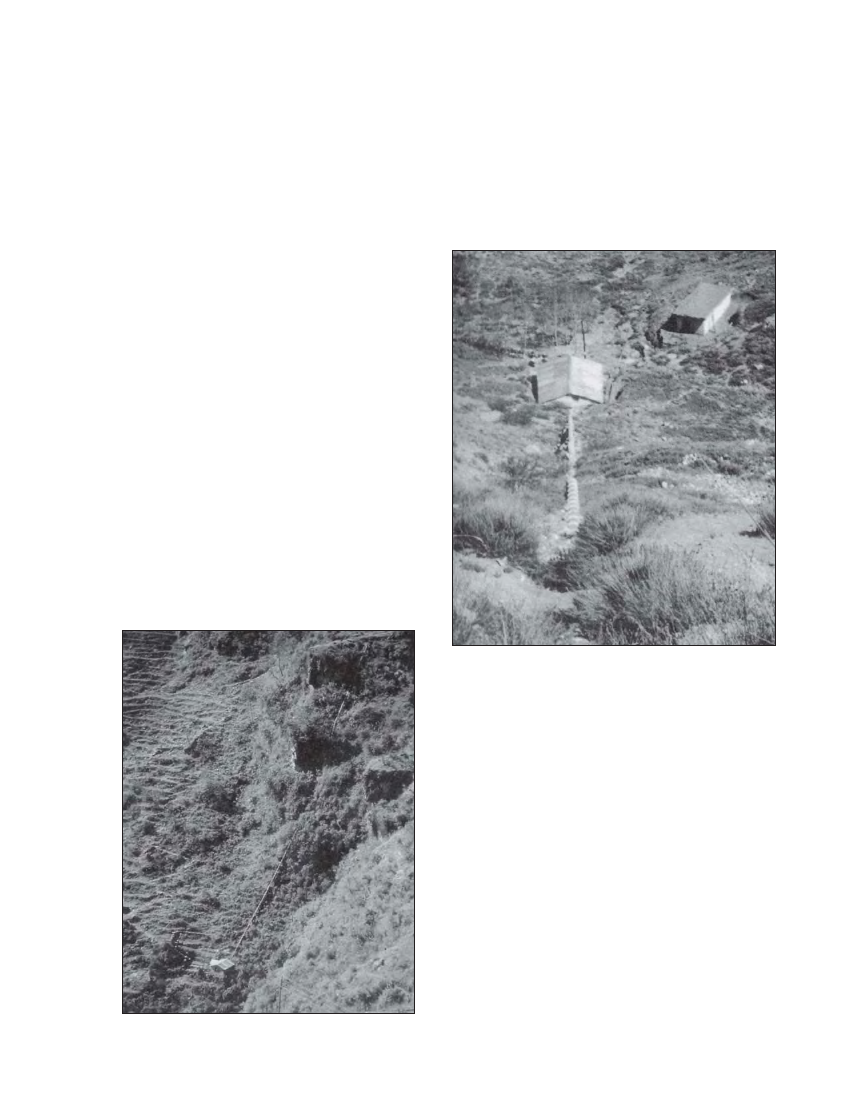
CIVIL WORKS GUIDELINES FOR MICRO-HYDROPOWER IN NEPAL
85
6. Penstocks
6.1 Overview
A penstock is a pipe that conveys the flow from the forebay
to the turbine. The penstock pipe starts where the ground
profile is steep as shown in Photograph 6.1. The penstock
pipe usually constitutes a significant portion of the total
micro-hydro construction cost. Therefore it is worthwhile
optimising the design. This involves a careful choice of:
pipe material, such as mild steel or HDPE; an economical
diameter such that the head loss is within acceptable limits;
and wall thickness so the pipe is safe for the design head
and any surge effect that may result from sudden blockage
of the flow. The potential energy of the flow at the forebay is
converted into kinetic energy at the turbine via the penstock
pipe. Since the flow is conveyed under pressure it is
important for the pipe design to be safe. Cases have been
reported where the penstock pipes have burst. Since the
penstock is on steep ground slopes, such pipe burst can
instantaneously cause landslides and other stability
problems. Furthermore, penstock installation is often
challenging and requires safe and careful work as shown in
Photograph 6.2.
Photo 6.2 Penstock alignment of the 50 KW Barpak micro-
hydro scheme, Gorkha, Nepal
Photo 6.1 Penstock alignment of the 36 kW Jharkot micro-hydro
scheme, Mustang. Nepal
6.2 Selection of the penstock alignment
6.2.1 SITE WORK
Selection of the penstock alignment at site should be based
on the following criteria:
Forebay location
The penstock starts at the forebay, for which location criteria
are given in Section 5.1.3. In addition, the forebay location
should be chosen to optimise the lengths of headrace and
penstock whilst achieving the required power output from
the scheme. Penstock pipe is generally more expensive than
headrace canal, therefore in most cases the forebay location
should be chosen to give the minimum penstock length.
However, sometimes a longer penstock may be economic, to
avoid the need for the headrace to cross an unstable slope.
Practical ground slope
An ideal ground slope for the penstock alignment is between
1:1 and 1:2 (V:H). The flatter the ground slope the less
economic is the penstock since a longer pipe length is required
for a lower head.